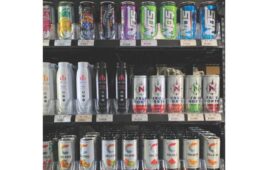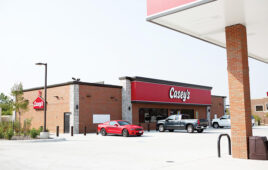 By James Mitchell, Product Manager, Emerson Climate Technologies, Retail Solutions
By James Mitchell, Product Manager, Emerson Climate Technologies, Retail Solutions
Six practical benefits for today’s convenience store operator
Today, many convenience stores utilize energy management systems for HVAC, refrigeration, lighting and other building systems. Some retailers couple this with in-house or remote monitoring services that provide real-time performance data on building operations, system efficiency, energy usage and more. Operators who use monitoring services can use facility insights to increase equipment uptime, eliminate unnecessary truck rolls, minimize emergency service call costs and improve effectiveness of service technicians to fix issues on the first visit.
Below are six practical benefits for convenience store operators to best utilize facility controls for improved operation and maintenance of refrigeration systems:
- Information and expertise keeps stores operating smoothly. The Internet of Things (IoT) and databases allow identification and prioritization of significant problems from nuisance alerts. An effective monitoring system minimizes store contacts to the most critical situations, freeing up store management and associates to focus on their most important task: serving customers.
- Expert triage avoids unnecessary, costly service calls. Combining real-time data with industry expertise, experienced service personnel at a remote monitoring center can triage equipment alarms as they arise to assess and diagnose the events. With this process, they can reduce nuisance dispatch by managing non-critical issues remotely with no store contact. In a recent pilot program, one retail customer was able to avoid dispatch in 24% of alarms received through remote monitoring services.
- Direct-to-store alerts allow local problem solving. When a significant problem arises that needs to be addressed immediately, local store personnel can be contacted electronically or by phone, with a specific call-to-action for resolution that reduces risks with food safety, customer incidents and unnecessary service calls.
- Remote monitoring can identify system issues before they appear locally. Traditional refrigeration system monitoring uses local sensors, which react to an event. Remote monitoring and diagnostics can detect equipment maintenance issues before they occur, identifying potential problems and shrink causes to allow retailers to make operational improvements that result in substantial cost savings. With proactive alarm monitoring, one retail customer in a recent pilot program avoided product loss events that resulted in an annual savings of $1,500 to $3,000 per store.
- When service calls are necessary, technicians are better prepared before dispatch. As remote monitoring teams diagnose a problem, they can communicate with local service technicians before dispatch to provide valuable information upfront. With details on previous equipment diagnosis, service history and the recommended parts or specific services needed, the trucks and technicians can be best equipped for the most effective solution. With some service-level selections, this process can connect the local service company directly to the monitoring system, pass detailed information electronically and even automate service dispatch for critical issues, based on the local rules outlined.
- Operate consistently across all stores with enterprise-wide control. Local facility control can be extended for enterprise management. Operators can manage HVAC, refrigeration and lighting systems from one central location, ensuring visibility and control across an entire chain of stores.
There is a great opportunity for convenience store operators to better utilize store equipment for a higher return on investment by leveraging energy management systems and monitoring services. New technology and IoT deployment is improving options daily, so operators who are already using these systems should check with their facility controls and monitoring service provider to learn more about their latest capabilities.
As a product manager within Emerson Climate Technologies’ Retail Solutions business, James Mitchell is responsible for energy and maintenance applications and services. With more than 20 years of industry experience, Mitchell has worked with various retail customers on facility HVACR, energy and maintenance solutions, including chain-wide performance contracts with energy-saving initiatives such as controls and equipment upgrades, lighting retrofits and enterprise-wide building energy management system upgrades.




